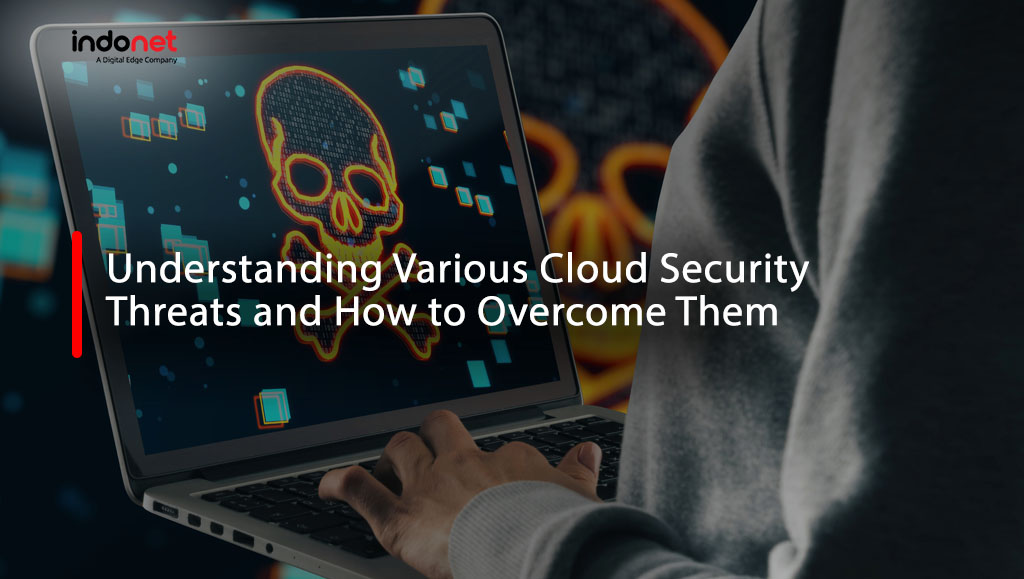The use of cloud technology in a corporate environment can open opportunities for various cloud security threats. This is often due to inadequate security systems and a lack of human resource skills.
Attacks on cloud computing can disrupt company operations and cause business chaos. To prevent this, it is important to recognize the types of threats that can potentially compromise cloud security and how to address them. Read the following review to the end to secure your company’s important data.
Understanding Cloud Security Threats
Cloud security threats refer to the risks and dangers that can arise from using these services. Cloud computing is a model where computing resources, such as storage and data processing, are provided over the internet.
Although cloud computing offers great flexibility and efficiency, it is important to be aware of the accompanying threats. These threats can include breaches of integrity, security breaches, and a range of cyberattacks.
The impact of these threats on cloud security can extend to various aspects, including sensitive company data, service disruptions, and business reputation.
Types of Cloud Security Threats
There are many types of threats to cloud security. Before taking action, it is important to understand the specific threats involved. The types of threats to cloud computing security include:
- Data Breach:
Data breaches are one of the biggest threats in the cloud environment. Sensitive data can be leaked due to security system weaknesses, human error, or cyberattacks. Such breaches can result in significant financial and reputational losses for an organization.
- Unauthorized Access:
Unauthorized access occurs when individuals or unauthorized parties manage to access data or systems in the cloud. This can be due to weak passwords, lack of two-factor authentication, or weaknesses in access control.
- Distributed Denial of Service (DDoS) Attacks:
DDoS attacks aim to disable services by overwhelming the system with excessive internet traffic. This can result in prolonged downtime and significant business losses.
- Misconfiguration:
Misconfiguration of cloud services often leads to data breaches and other attacks. This can occur due to a lack of knowledge or errors during security setup.
- Inadequate Security Alerts:
Security alerts are an important step in mitigating cloud computing attacks. With these alerts, you can respond quickly to attacks and reduce potential losses. Therefore, it is important to implement proactive security notifications on your cloud server.
How to Overcome Cloud Security Threats
To stay protected from cloud security threats, several measures can be taken:
- Train Staff on the Importance of Cloud Security Awareness:
The first step is to train staff on the importance of maintaining cloud security. The goal is to effectively cover security gaps. It is important to note that potential threats to systems or data can happen to anyone in certain situations.
This training will involve staff in discussing basic cloud security concepts, potential threats, and best practices for securing data and access to cloud systems. The aim is to increase staff awareness of security risks that may occur if security practices are not properly implemented and how security incidents can negatively impact the company.
- Use Encryption:
Another method is to use strong encryption to ensure cloud security. Encryption is a process of converting data into a format that cannot be read without the encryption key. In the context of cloud storage, there are two common types of encryption: data in transit and data at rest encryption.
Data in transit encryption involves securing data while it is being transmitted over the network, such as when accessing cloud applications or sending data over the internet. This ensures that unauthorized parties cannot access or understand the data during transmission.
Data at rest encryption involves securing data stored on cloud provider servers. Even if someone manages to access the physical server, the data will remain protected as it cannot be read without the proper encryption key. Using encryption provides an additional layer of protection against data theft or unauthorized access.
- Active and Responsive Cloud Security Monitoring:
One of the most important steps in maintaining cloud security is conducting active and responsive security monitoring. Active monitoring involves regularly inspecting and supervising the cloud environment to detect suspicious activities or anomalies.
This requires automated monitoring tools that scan logs and operational data to look for signs of potential security threats. Active monitoring allows organizations to quickly identify security incidents, minimizing their impact.
Responsive monitoring involves taking action after detecting threats or incidents. Once suspicious activity is detected, responsive measures should be promptly taken. This includes isolating infected systems, stopping unauthorized access, collecting digital evidence, and developing a plan to address the incident.
- Choose a Trusted Cloud Service Provider:
The final step to remember and consider is selecting a reliable cloud service provider. Choosing a trusted provider has a significant impact on the security and privacy of information stored in the cloud.You can choose a trusted cloud service provider by considering the company’s reputation in terms of security, privacy, and compliance. In this case, Indonet can be the best choice and solution.
Indonet is one of the pioneers in providing digital infrastructure services with various solutions designed for modern business needs, including global cloud services. With Indonet’s global cloud services, you will receive various benefits. You also don’t need to worry about potential cloud security threats. So, don’t hesitate any longer; contact us and use Indonet’s global cloud services now!

